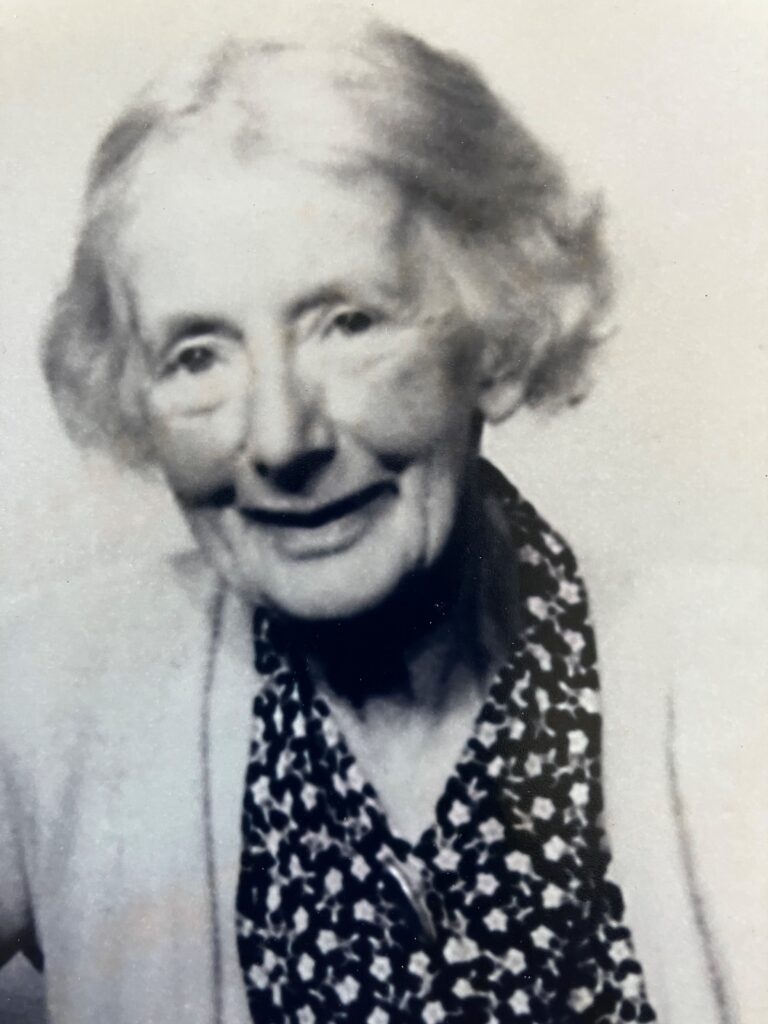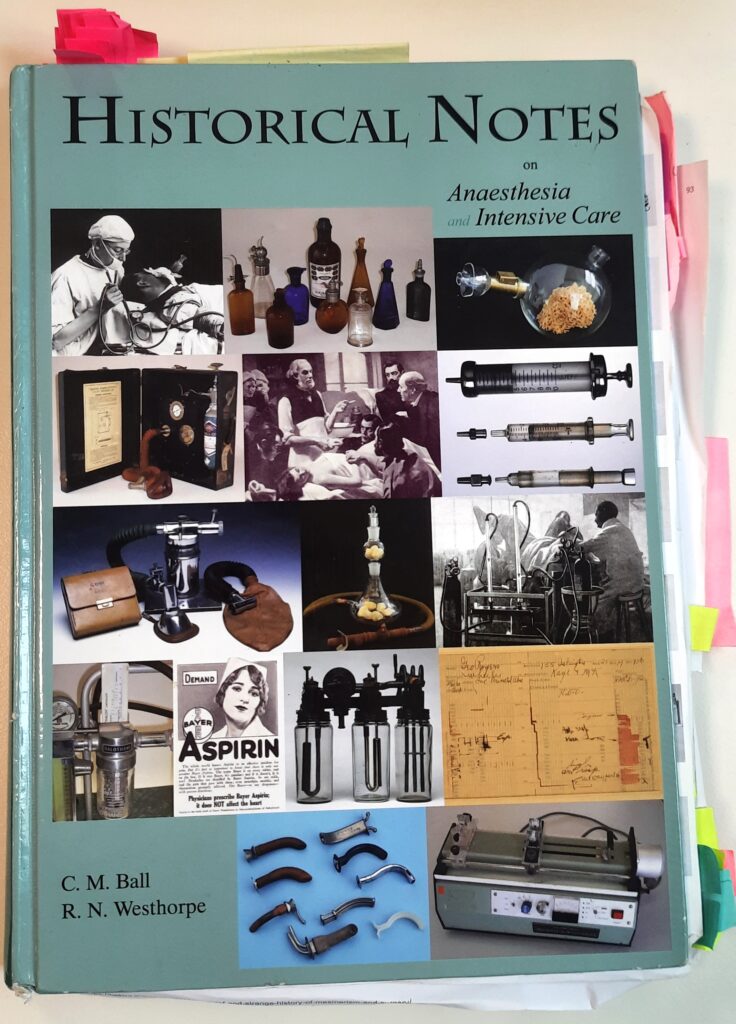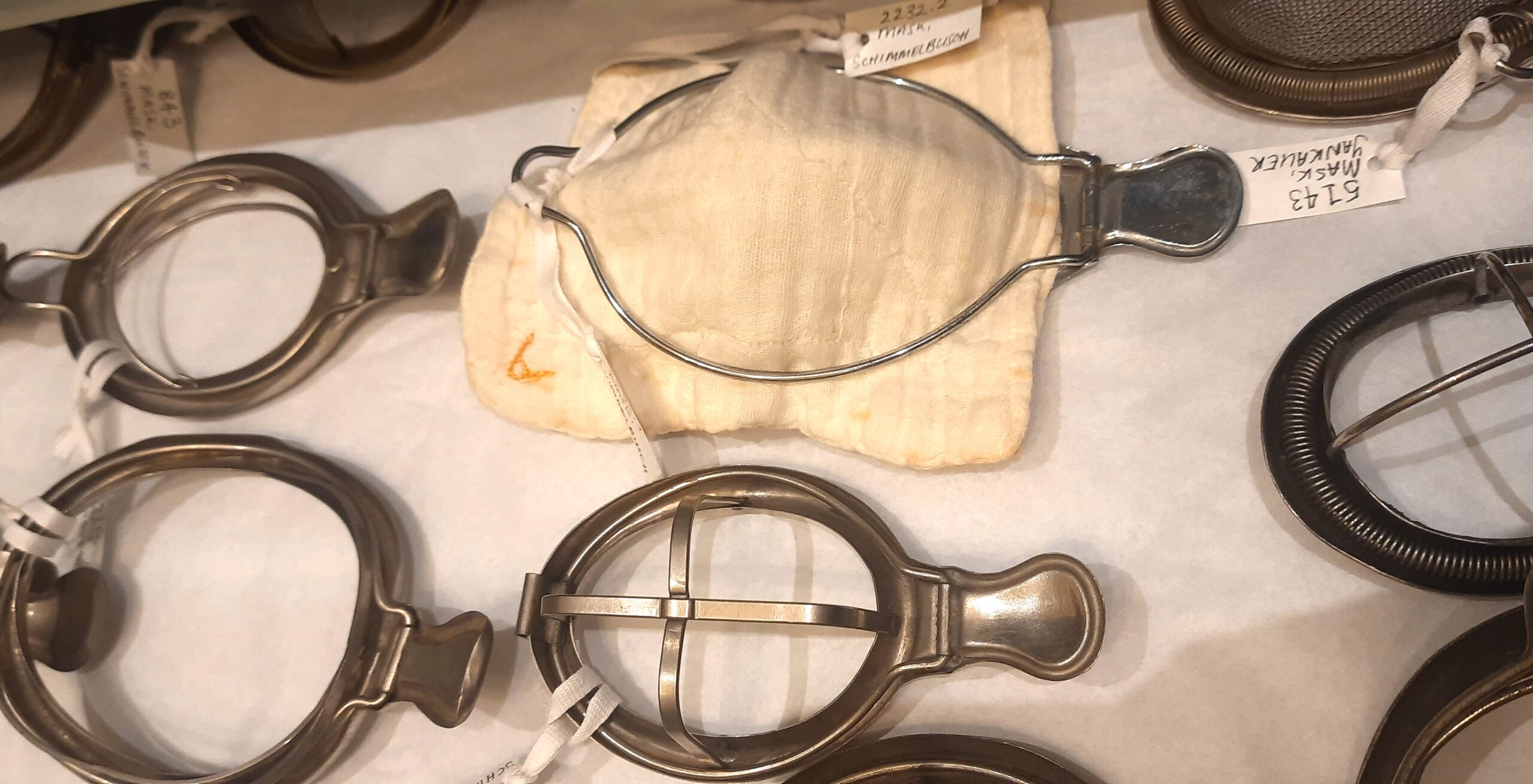Zana Bell is Geoffrey Kaye Museum’s 2023 History and Heritage Grant winner. Zana has had six novels published internationally and has a particular interest in women’s history. Zana travelled from New Zealand to Melbourne in early March 2024 to conduct research at the Geoffrey Kaye Museum of Anaesthetic History. As part of the grant acquittal Zana was asked to write up an article about her findings and experience researching at the Museum and archives. See below for Zana’s article.
Ethyl chloride, pharyngeal airways, insufflation and water sight flowmeters! Some of you might be familiar with these words but I do not have a medical background so terms like these are portals into fascinating – and, at times, alarming – worlds where blood, pain and miraculous, life-saving medical interventions are simply par for the course. These past two weeks have been a steep learning curve but an invigorating one as I immersed myself in the archives of the Geoffrey Kaye Museum.
I embarked on this anaesthetic odyssey because I am working on a biography of Auckland’s first woman doctor, Alice Horsley. She opened her GP practice in 1900 but she also became an anaesthetist, working alongside eminent surgeons such as Sir Carrick Robertson. The need to steep myself in every aspect of Alice’s work proved particularly challenging when it came to anaesthetics. My copious notes soon became a tangle of gases, devices and innovations. I was therefore very fortunate to be given a History and Heritage grant from ANZCA to spend two weeks in the Geoffrey Kaye Museum where I could come to grips with the extraordinary world of early twentieth century anaesthetic practices.

Photo: Alice Horsley. Image courtesy of Anne Morris, Alice’s grand-daughter.
My ‘bible’ during my Melbourne visit was Historical Notes on Anaesthetics and Intensive Care by Christine Ball and Rodney Westhorpe. Written for a lay audience (such a relief after dipping through tomes scribed for fellow practitioners), it’s both an enlightening and engaging read for these authors have an eye for a good story. One anecdote I particularly enjoyed came from Dr Alexander Wood recalling his use of strychnine in the 1850s:
“One remarkable case, many years ago, I cured by applying nux vomica to the blistered surface. But I never did it again, for it seemed likely to kill two people: my patient, an old lady, who nearly died of poison; and myself, then a young doctor, who nearly died of fright.” (p.120)
This book introduced me to new ranges of implements such as tongue forceps and probangs which I can see were designed to help but could easily double as torture devices. I was particularly struck by how innovative anaesthetists are with equipment and methodologies under constant revision and improvement. I was also fortunate to meet Dr Chris Ball briefly and I’m looking forward to reading her biography on Joseph Clover, The Chloroformist, that has garnered so much praise.

Historical Notes on Anaesthesia and Intensive Care by C.M Ball and R.N Westhorpe
Another useful and entertaining text was Earlier Days: a story of St Vincent Hospital by Douglas Miller. Long deceased surgeons and anaesthetists came alive under his pen, and I enjoyed his wry observations. For example, when talking of the contributions of surgeon Charles Nathan, Miller commented:
‘We can reflect that the young colony and successive generations owe much to the ill health that drove many distinguished people out here. … Today we set great store on the physical fitness of our new settlers and no amount of intellectual brilliance would be deemed to counterbalance a small shadow on the lung.’ (p29)
Miller included many statistics which give a glimpse into those early days. Here are some recorded hospital cases in 1910 and 1914, with mortality figures given in brackets: 61 enteric (6), 45 pneumonia (7), 37 pulmonary tuberculosis (8), 201 accidents (8), 3 Alcoholism (3), 111 Syphilis, 16 Gonorrhea.
Miller noted how the number of accidents admitted to hospital rose with the advent of motor cars, but he also found the use of some statistics rather quaint.
‘An interesting and unfruitful feature of the reports of some years is the cross classification of diseases and religions, e.g. Venereal diseases: 115 – Roman Catholic 37; Church of England 71; Hebrew 5, Mohammedan 2. It would be hard to make nosological deductions from this!’ (p 47)
Miller’s description of an operating theatre opened in 1902 was useful for he explained that there was a ceiling window – an important feature in the days before satisfactory artificial lights. I will now have to find out what Auckland’s operating theatres were like. Miller also mentioned the new-fangled operating table which was capable of a great many contortions which, he pointed out, were clearly fascinating for photographs from that time always show it in its most complicated positions.
Of course, reading only formed a part of my research. The artefacts were a pleasure to behold – and to handle. The new curator, Veronica Dominiak, and I spent happy hours opening drawers of unexpected treasures. There were phials with unpronounceable names, and needles which rather resembled hat pins given their length and intrinsic beauty. The variety of small metal masks intrigued and those that still had their calico bags were particularly evocative. I was delighted to see a Guedel airway, and what I think was a water sight flowmeter. There were hoses and flaccid bags – some encased in network – and a variety of self-standing anaesthetic apparatus. I may not have understood everything I was looking at, but it did give me a closer, tactile understanding of Alice’s world.

Collection of various anaesthetic masks in storage at the Geoffrey Kaye Museum of Anaesthetic History

Collection of oropharyngeal airways in storage at the Geoffrey Kaye Museum of Anaesthetic History
I have a huge sense of gratitude not only to the College who gave me this opportunity, but also to those who made me so welcome. Monica Cronin, the previous Curator and Laura Foley, the Operations Manager of Knowledge Resources, paved the way for my arrival, while Alina Hamilton, the Records and Information Management Advisor, dug out boxes of relevant documents in which I encountered the work of formidable researcher, Gwen Wilson. Veronica warrants a special mention. She’d only been in the job two weeks but still ensured that all my queries and quests were well met, and we had a most enjoyable time exploring the artefacts together.
Heartfelt thanks to all!
